Introduction to the propagation methods of peony flower
The propagation of peony flowers can be done by sowing method, split method and grafting method. It is commonly used to propagate by ramet and grafting, and it can also be sown and cut. The suitable period for transplantation is from late September to early October, not too early or too late. Sowing methods are often used to cultivate new varieties.
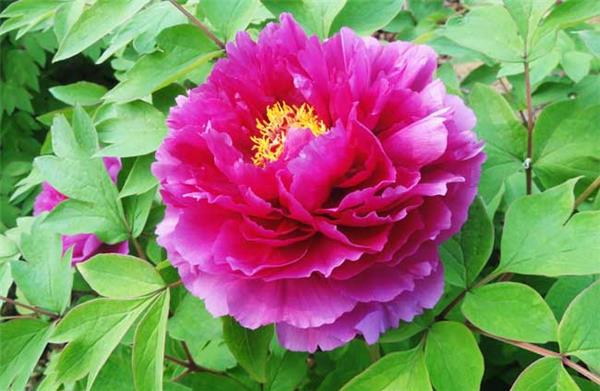
Ramet propagation
The ramet propagation of tree peony has been widely used in the Ming Dynasty. The specific method is as follows: the large tree peony with luxuriant growth is dug up as a whole and separated from the junction of root texture. The number of molecular plants per plant depends on the size of the original plant, with more points for the big ones and less for the small ones. Generally, every 3-4 branches is a seed plant, and has a more complete root system. Then add a little sulfur powder and mud. Smear the wound on the root, wipe it evenly, and then you can plant it separately. The time of ramet propagation is during the period from the Autumn Equinox to Frosts Descent every year, and it is better to do it at the right time. At this time, the air temperature and ground temperature are high, peony is in a semi-dormant state, but there is still a long period of vegetative growth time, ramet cultivation has no serious effect on root growth, and some new roots and a small number of plant buds can be produced after ramet planting. If the ramet is planted too late, the root growth is very weak, or there is no new root, the next spring, the plant development is weaker, the root is weak, it is not resistant to drought, easy to die. If the ramet is too early, the air temperature and ground temperature are high, and it can grow rapidly, which is easy to cause autumn hair. The mother plant of peony ramet is generally made use of robust clumps. In the mother plant for ramet propagation, the tillers should be retained as far as possible, and all the roots on the new seedlings should be retained so that the new seedlings can grow for 5 years. Such seedlings are easy to survive and grow more exuberantly after planting. The more roots are retained, the more prosperous they grow.
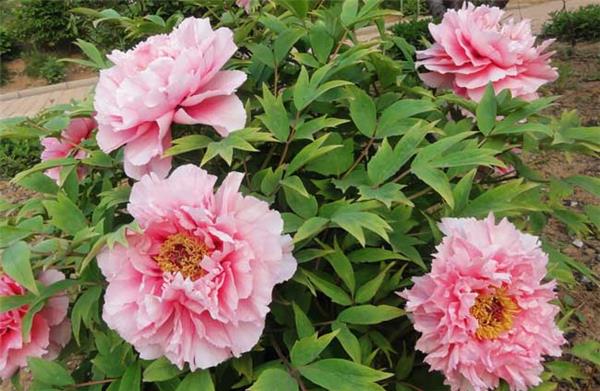
Grafting propagation
The grafting propagation of peony can be divided into two kinds according to the different rootstocks used, one is wild peony, the other is peony root. There are three common grafting methods of peony: embedding method, abdominal grafting method and bud grafting method. In the embedding method, the peony root is used as the rootstock, because the peony root is soft and has no hard heart, it is easy to be grafted, the root is thick and short, the nutrient is sufficient, and the growth is exuberant in the early stage after grafting. If the peony root is grafted, the xylem is hard, and the grafting is more difficult, but the life span is longer. The best time for grafting is from late September to early October every year. The rootstock is a sturdy peony root with a diameter of 2-3 cm and a length of 10-15 m without disease and insect pests. Abdominal grafting is a method of high grafting to improve varieties. It uses many branches of inferior tree peonies or 8-10-year-old medicinal tree peonies to be grafted into excellent varieties with different colors. The grafting time is from early July to mid-August. First, select the peony plants with good varieties, fat plants, disease-free and insect-free, and cut the soil buds from the ground, or the short-skill branches of the same year are 5-7 cm long, preferably the short branches with 2-3 strong buds as scions. Leave a petiole on the scion. After selecting the scion, make an oblique cut on the back of the lower bud of the scion into a horse ear shape, and then obliquely cut into a wedge on the other side of the Maltese shape, so that both sides of the graft can be angled to the cambium tissue between the xylem and phloem, so that it is easy to survive. Before and after abdominal grafting of peony, the suitable humidity for normal plant growth should be maintained except without irrigation in the rainy season. Budding is an effective method to propagate and cultivate multiple varieties and colors of tree peony, and the budding time is carried out from May to July. It is better to have sunny days when grafting. There are two methods: skin sticking method and bud replacement method. The peeling method is to cut off a rectangular or shield-shaped incision on the annual branches of the rootstock together with the woody part, and then cut off the axillary buds of the scion together with the xylem to cut off a bud of the same size and shape as that on the rootstock. However, the buckle quickly affixed the bud block to the cut of the rootstock and fastened it with a plastic rope. The method of bud replacement is to remove the axillary buds of the grafted part of the rootstock together with the cambium, retain the complete bud embryos on the xylem, then peel off the axillary buds of the reverse scion with the same method, and quickly cover them on the bud embryos of the rootstock, paying attention to the fact that the two should coincide with each other. finally, tie it with a plastic rope. The grafted plants should be irrigated, loosened and fertilized in time to promote their healing.
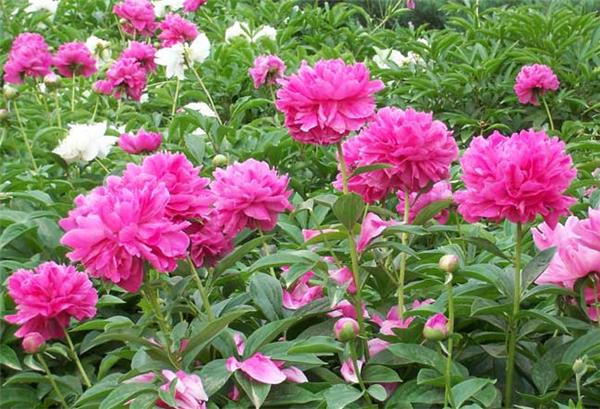
Cuttage propagation
Cuttage propagation is a method to propagate new plants by using the adventitious roots of peony branches, and it is one of the methods of asexual propagation. The method is to cut off the branches first, detach them from the mother plant, and then insert them into the soil or other substrates to make them take root and become new plants. For the branches propagated by peony cuttings, the annual soil buds from the roots of the peony should be selected, or during the shaping and pruning of the peonies, the branches with full stems and full terminal buds without diseases and insect pests should be selected as ears with a length of 10-18 cm. The root of peony is fleshy root, which likes high dryness, avoid dampness and is resistant to drought. Therefore, the nursery bed should be ventilated and sunny, and a high bed should be built to raise seedlings. When inserting, water one bed at a time and water it thoroughly at a time.
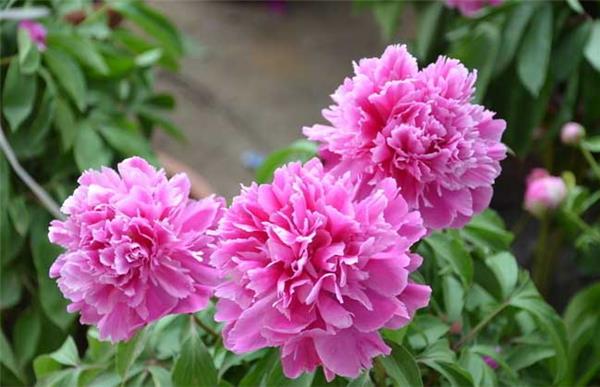
Sowing and reproduction
Sowing and reproduction, which is a method of sexual reproduction, is to reproduce with seeds or to select new varieties. Before sowing, the soil must be carefully arranged and disinfected, the land should be ploughed and carefully cultivated, and sufficient base fertilizer should be applied. Then build a small bed 70-80 square meters wide, hole sowing or strip sowing can be done. Sowing should not be too deep, with a degree of 3-4 square meters, and the soil should be covered flat after sowing. Then gently stabilize the soil, and then pour water through.
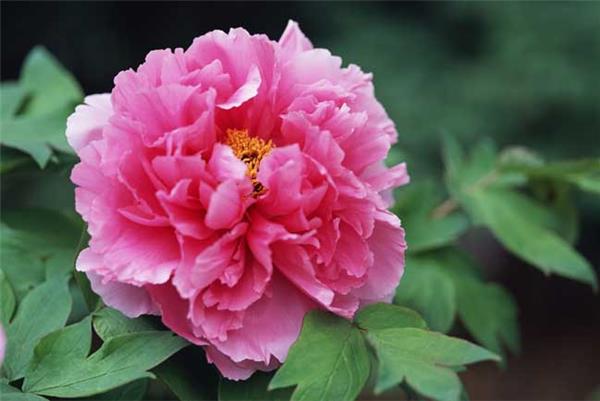
Striping propagation
Peony striping method is a method of propagation based on the fact that branches can produce adventitious roots, pressing branches or burying them with soil on the plant without leaving the mother plant, keeping the soil moist, rooting in the buried place, and then cutting off and planting to become a new plant, which is also a method of asexual reproduction of peony. This method mainly includes: covering basin, cultivating soil and pressing strip method and double flat method.
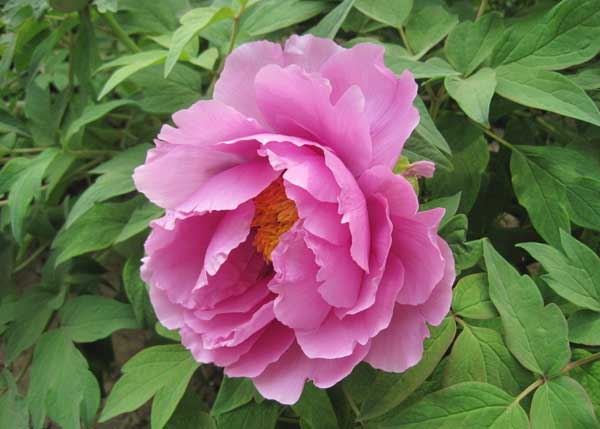
Tissue culture
The tissue culture and propagation of plants is based on the totipotency of plant tissues and cells, and the embryos, flower buds, stem tips, tender leaves and petioles of tree peony are cultured in vitro. Generally, these materials are soaked in 75% semen for 5-10 minutes, and immediately washed in aseptic water, then soaked in 5% Antifumin solution for 7-10 minutes for surface sterilization, and then washed with sterile water for 3-4 times. finally, it is put on the medium for aseptic culture. The basic medium was MS, and other additional components were indole caproic acid, naphthylacetic acid, indolebutyric acid, gibberellin, hydrolyzed protein and so on.
This is the end of the introduction on the breeding of peonies. I hope it will be helpful to you.
Sowing and reproduction
Sowing and reproduction, which is a method of sexual reproduction, is to reproduce with seeds or to select new varieties. Before sowing, the soil must be carefully arranged and disinfected, the land should be ploughed and carefully cultivated, and sufficient base fertilizer should be applied. Then build a small bed 70-80 square meters wide, hole sowing or strip sowing can be done. Sowing should not be too deep, with a degree of 3-4 square meters, and the soil should be covered flat after sowing. Then gently stabilize the soil, and then pour water through.

Striping propagation
Peony striping method is a method of propagation based on the fact that branches can produce adventitious roots, pressing branches or burying them with soil on the plant without leaving the mother plant, keeping the soil moist, rooting in the buried place, and then cutting off and planting to become a new plant, which is also a method of asexual reproduction of peony. This method mainly includes: covering basin, cultivating soil and pressing strip method and double flat method.

Tissue culture
The tissue culture and propagation of plants is based on the totipotency of plant tissues and cells, and the embryos, flower buds, stem tips, tender leaves and petioles of tree peony are cultured in vitro. Generally, these materials are soaked in 75% semen for 5-10 minutes, and immediately washed in aseptic water, then soaked in 5% Antifumin solution for 7-10 minutes for surface sterilization, and then washed with sterile water for 3-4 times. finally, it is put on the medium for aseptic culture. The basic medium was MS, and other additional components were indole caproic acid, naphthylacetic acid, indolebutyric acid, gibberellin, hydrolyzed protein and so on.
This is the end of the introduction on the breeding of peonies. I hope it will be helpful to you.
Related
- Wuhan Hospital Iron Tree Blooming Result Was Instantly Frightened by the Gardener Master
- Which variety of camellia is the most fragrant and best? Which one do you like best?
- What is the small blue coat, the breeding methods and matters needing attention of the succulent plant
- Dormancy time and maintenance management of succulent plants during dormancy
- Minas succulent how to raise, Minas succulent plant pictures
- What are the varieties of winter succulent plants
- How to raise succulent plants in twelve rolls? let's take a look at some experience of breeding twelve rolls.
- Attention should be paid to water control for succulent plants during dormant period (winter and summer)
- Watering experience of twelve rolls of succulent plants
- Techniques for fertilizing succulent plants. An article will let you know how to fertilize succulent plants.



